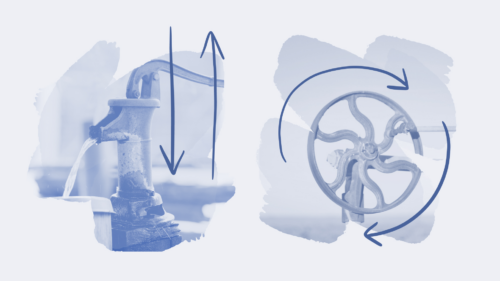Finding the best way to write a sentence can be extremely frustrating. For me that’s usually when writer’s block comes in. It’s not what to say, but how to say it. I find myself writing and rewriting a single sentence a bunch of times to find the right style. Often the result is a pompous sounding message.
That doesn’t work at all for email.
How I write emails
Most emails you receive (that you want to read) are from friends. So I started looking through the emails that I sent back to my friends and found that the style was incredibly relaxed (surprise!).
The headlines weren’t all in title case with a marketing sounding message (“How To Write Emails That Get Read”), they were usually something quick and simple (“A few email tips”). The first word was usually capitalized, but not the rest.
Simple and informal.
Maybe this was the best voice to use? I started to try to write like I would write to a friend. If I was telling a designer friend about my new book, how would I talk about it?
This worked a little better, but I still really struggled. Then a single word changed my writing style. Well, really a name.
I started to write every email I sent like this:
“Philip, “
Yes, I put someone’s name at the top. Not just anyone, I wrote it to a specific person. Philip is my brother-in-law and I’ve been helping him learn design over the last couple years (he’s quite good now). I often send him design resources, so now I write my emails like I am talking to him.
That actually works for almost all my writing. By picking someone I think it will really benefit I know what level to write for, making it informal comes much more easily, and I avoid writing it over and over again because of writers block.
I knew my strategy was working when I received this text message from Philip after a recent email to my list.
“So the email you just sent out sounded like it was written to me specifically. The only thing that gave it away was that it was answering a question that I didn’t remember asking.”
Nice. That’s exactly the goal. So find one person who best represents your audience for that email. Write and teach to them specifically, then remove their name from the top of the email (otherwise that would be confusing).
Teach
The best emails are the ones that provide immense value to the reader. If your entire email sequence consists of “sell, sell, sell” then you’ve entirely missed the point. Instead you want to use education to help your reader. As you write each email ask yourself, “will this content help the recipient improve their life or work?” If not, don’t send it.
Eventually you can work in a sales message. But not until you’ve been teaching for several emails. Joanna Wiebe from Copyhackers says to have at least three educational emails for each sales email. The more you help the reader, the more they will trust you, and the more likely they will be to purchase from you.
When you do eventually work in a sales message it should still be helpful by itself. Tell stories and use examples. Have a narrative for your email beyond “buy my product.”
I received a reply to one of my sales emails a few weeks ago that said:
“What I love about your sales emails, is that I find myself wanting the product even before I’ve fully realized you are making a sales pitch.”
That’s how it should feel if you are teaching and providing value throughout all your content.
If you’re interested in a better system for managing your email marketing, checkout ConvertKit. We are launching to the public on Tuesday April 16th, so now is your last chance to preorder and get a significant discount for life.



Hey Nathan,
I’ve been struggling with creating emails for the longest time of my life. Even though most of my emails are written for work related purposes at the moment, I feel that what you are sharing here can be very applicable to both work and for the blog that I just created.
I’ll definitely be try this style of writing on future emails.
great tactic nathan. It puts you in the right mindset.
make your days great
yassin
Thanks, Nathan! Some helpful points in here. I work in marketing for game developers. I think this approach will work particularly well for them. Thanks again.
Thanks for these tips, but sometimes it’s hard to teach! I try to follow this format, but sometimes the selling bit gets overemphasized, unfortunately. At least I now know what to pay extra attention to.
This is true, but how do you personilize when you have 10,000 emails to write for a campaign lasting only for a few days.
I use a tool like ConvertKit to send them for me.
If you are interested in a more complex method about how to properly build a relationship with your audience through email campaigns, instead “send three educational emails, then sell them”, watch this video made by MindValley: https://www.youtube.com/watch?v=r_0GXSn6onk